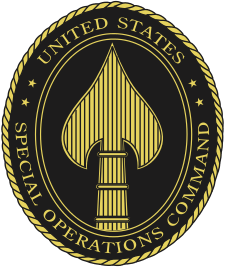Marine Raider Regiment
| Marine Raider Regiment | |
|---|---|
|
Marine Raider Regiment insignia | |
| Active | 2006–present |
| Country |
|
| Branch |
|
| Type | Special Operations Forces |
| Role |
Primary tasks: Secondary tasks: |
| Size |
1,512 personnel authorized:[1]
|
| Part of |
|
| Garrison/HQ |
Camp Lejeune, North Carolina Camp Pendleton, California |
| Nickname(s) | Marine Raiders |
| Motto(s) | "Always Faithful, Always Forward" |
| Engagements |
Operation Enduring Freedom Operation Iraqi Freedom |
| Website | http://www.marsoc.marines.mil/ |
| Commanders | |
| Current commander | Colonel Milborn[2] |
The Marine Raider Regiment, formerly known as the Marine Special Operations Regiment (MSOR) is named in commemoration of their elite World War II predecessors, the Marine Raiders.[3][4] The modern Raiders are a special operations force of the United States Marine Corps. The Regiment's organization was finalized in 2007 and contains three battalions, the First, Second, and Third Raider Battalions. The Marine Raider Regiment is the principal combat component of the Marine Corps Special Operations Command (MARSOC).
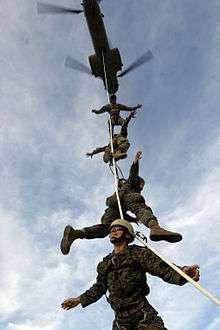
Mission
The mission of the Regiment is to provide tailored military combat-skills training and advisor support for identified foreign forces in order to enhance their tactical capabilities and to prepare the environment as directed by USSOCOM as well as the capability to form the nucleus of a Joint Special Operations Task Force. Marines and Sailors of the MSOR train, advise and assist friendly host nation forces – including naval and maritime military and paramilitary forces – to enable them to support their governments' internal security and stability, to counter subversion and to reduce the risk of violence from internal and external threats. MSOR deployments are coordinated by MARSOC, through USSOCOM, in accordance with engagement priorities for Overseas Contingency Operations.
- Direct action
- Special reconnaissance
- Counter-terrorism
- Foreign internal defense
- Unconventional warfare
- Information operations
- Security force assistance
- Preparation of the environment
- Counter-insurgency
- Counter-Narco Terrorism
- Hostage rescue
- Maritime Interdiction Operations
- Gas and Oil Platform Operations
- Deep reconnaissance
- Special/Clandestine operations
Insertion/Extraction Techniques
- Patrolling
- Helicopter Touchdown
- Helocast Personnel
- Small Boat/RHIB
- Rappel
- Fast-roping
- Special Patrol Insertion/Extraction (SPIE)
- Parachute Static Line
- HALO/HAHO parachuting
- Over-the-Horizon Combat Rubber Raiding Craft (CRRC)
- SCUBA
- Kayak/Canoe
History
Organization
In February 2006 Marine Corps Special Operations Command (MARSOC) was created at Camp Lejeune North Carolina. The 1st and 2nd Marine Special Operations Battalions were created along with the Marine Special Operations Advisor Group (MSOAG, the predecessor of the MSOR). The majority of the combat personnel assigned to the two battalions were drawn from the Marine Corps Force Reconnaissance community. In April 2009, the MSOAG was redesignated the Marine Special Operations Regiment which then built in a new level of command by making 1st and 2nd MSOB subordinate, and redesignated MSOAG's operational Marines the 3rd Marine Special Operations Battalion. Each battalion consists of four companies and each company consists of four fourteen-man Marine Special Operations Teams.[5] The 1st and 2nd Marine Raider Battalions are designated as DASR battalions. These MRBs focus on direct action raids and reconnaissance operations.
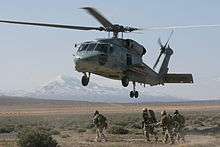
The base unit of the MSOR is the fourteen-man Marine Special Operations Team (MSOT). Each 14-man MSOT is organized into three elements: a Headquarters (HQ) and two identical Tactical Squads. The HQ element consists of a Special Operations Officer Team Leader(SOO/Captain), Team Chief (Master Sergeant CSO), Operations SNCO (Gunnery Sergeant CSO), and a communication SNCO. Each Tactical Element consists of an Element Leader (Staff Sergeant CSO), three Critical Skills Operators (Sergeant/Corporal CSOs), and a Navy Special Amphibious Reconnaissance Corpsman (SARC). The organization allows a Team to operate on its own if needed, but maintains the ability to operate as part of a bigger unit such as an MSOC or SOTF, similar to Army Special Forces ODA/B.
In 2014, it was announced that the Marine Special Operations Regiment and its units would be renamed Marine Raiders.[6] However, due to administrative delays the renaming did not become official until June 19, 2015.
Operational
The Marine's pilot program consisted of Det One deploying to Iraq with Navy SEALs from Naval Special Warfare Group 1 in 2004. Det One formed into the Marine Special Operations Battalions and deployed to Afghanistan in 2007. This deployment was marked with controversy when elements from Fox Company, 2nd Battalion were ambushed. The Marines were relieved from their operational charter in the country by an Army General from USSOCOM after claims were made that the Marines reacted inappropriately and caused excessive civilian casualties. [7] The Marines were later found by a military tribunal to be cleared of wrongdoing.[8] Shortly after a deal was struck to send 2d MSOB to Helmand province in lieu of the eastern provinces. In late 2007, Golf Company 2d MSOB was sent to Helmand Province in Support of NATO operations. In September 2009 the 1st Battalion returned to Afghanistan, this time in command of a joint special operations task force in the northwest of the country.[9][10]
The MSOR was deployed supporting the Global War on Terrorism in December 2013 alongside the 26th Marine Expeditionary Unit (Special Operations Capable) where they conducted various special operations missions, ranging from direct action, reconnaissance and other mission sets.

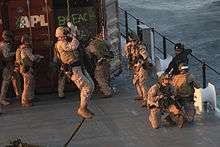
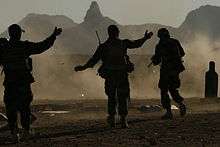

Training
Screening
Selection of the right personnel begins with a rigorous screening process designed to identify the right Marines for the right billet within MARSOC. Operational billets are open only to males. Marines who want to serve as special operators must attend Assessment and Selection (A&S). All Marines are screened to ensure that the Marines joining MARSOC meet the established prerequisites for duty within the command. Screening takes place in three stages: record screening, physical screening, and a psychological and medical evaluation.
Assessment and selection
Once a Marine is qualified through the MARSOC Recruiter's screening process, he will be assigned to the Assessment and Selection (A&S) Program. A&S is mentally and physically challenging. The program is conducted three times a year at an undisclosed location following the three-week Assessment and Selection Preparatory and Orientation Course.
Phase 1
The three-week A&S Phase 1 course serves as the precursor to the roughly three-week Assessment and Selection Course (A&S), and the nine-month Individual Training Course (ITC), with the purpose of preparing MARSOC Critical Skills Operator candidates for the challenges of A&S.
Aside from the physical training, which includes running, swimming and hiking, the course incorporates a mix of classroom instruction and practical application of basic Marine Corps knowledge and MARSOC and Special Operations Forces fundamentals.
A&S Phase 1 completion does not guarantee selection.
Phase 2
A&S is a mentally and physically challenging evaluation that enables MARSOC to identify Marines that have attributes compatible with special operations missions and the MARSOC way of life. A&S is highly competitive. The program is conducted three times a year at an undisclosed location following the three-week Assessment and Selection Preparatory and Orientation Course.
Individual Training Course
The Individual Training Course is a physically and mentally challenging nine-month course designed to produce Critical Skills Operators who can operate across the spectrum of special operations in small teams under spartan conditions. ITC uses a building block approach; the training rigor will systematically increase to mimic the complexity and stresses of combat. During ITC students are under constant observation from the instructor cadre as well as their peers. ITC is broken down into four training phases:
Phase 1
Phase 1 trains and evaluates students in the basic skill sets required of all special operators. Physical fitness, swimming and hand-to-hand combat are stressed in a PT program designed around endurance, functional fitness and amphibious training. This physical training program will continue throughout the course and has been designed to prepare the student for the unique demands of special operations. Field skills including: navigation; patrolling; Survival, Evasion, Resistance, and Escape (SERE); and Tactical Combat Casualty Care (TCCC). Mission planning, fire support training, and extensive communications round out the first phase.
Phase 2
Phase 2 builds upon phase 1, the next phase teaches mission planning, fire support training, small boat operations and scout swimming, demolitions, photography and information collection/reporting and crew served weapons. A 9-day exercise, "Operation Raider Spirit", is run to evaluate the candidates in patrolling and combat operations. Following on from this, students are taught Special Reconnaissance skills on a 3-week course. The end of phase 2 is an exercise, "Operation Stingray Fury", which tests the ITC students in urban and rural reconnaissance.
Phase 3
Phase 3 focuses on close quarters combat (CQB) operations, phase 3 of the ITC trains the student to high degrees of proficiency in rifle and pistol marksmanship (Combat Marksmanship), CQB Tactics, Techniques and Procedures, demolitions and urban combat skill sets employed by a frontline Marine Special Operations Team (MSOT). Phase 3, which lasts 5 weeks, culminates in a series of simulated raids against urban and rural targets in an exercise named "Operation Guile Strike".
Phase 4
In the final phase, students will receive instruction on irregular warfare operations. The course culminates with "Operation Derna Bridge". Derna Bridge will require the student to use all of the skills mastered throughout the course while training, advising and operating with a Partner Nation/Irregular force. Newly graduated Marine special operators will be assigned to one of the three Marine Raider Battalions.
Language training
All Marine special operators are required to undergo continual language training. However, based on ability, certain Marines will be selected for follow-on language training in an Advanced Linguistics Course.
Advanced training
The training of Marine special operators does not end with ITC. Marines will continue training at their assigned battalion for another 18 months. In addition, the MSOS offers advanced-level courses in a number of subject areas: Special Reconnaissance, Close Quarters Battle, Sniper, Breaching, and weapons employment. MSOS and advanced training courses:
- Advanced Linguist Course (ALC)
- MARSOF Advanced Sniper Course (MASC)
- MARSOF Close Quarters Battle Level II (MCQBL2)
- Marine Technical Surveillance Course (MTSC)
- MARSOF Dynamic Entry Level II Course (MDEL2)
- Tactical Acquisition Exploitation (SR level II)
- Hostile Forces Tagging Tracking Location (HFTTL)
- Helicopter Rope Suspension Training (HRST)
- Advanced EOD
- Joint Terminal Attack Controller (JTAC)
- Unmanned Aircraft System (UAS) Operator
- Advanced mountain warfare
- Advanced Driving Skills
- Survive, Evade, Resist and Escape (SERE)
Marine special operators also attend U.S. Army Airborne School and the USMC Combatant Diver Course.
See also
References
- ↑ Government Accountability Office. "GAO Congressional report, Special Operations Forces: Opportunities Exist to Improve Transparency of Funding and Assess and Potential to Lesson Some Deployments". gao.gov. Retrieved October 31, 2016.
- ↑ Archived 1 October 2013 at the Wayback Machine.
- ↑ Seck, Hope. "MARSOC units renamed for the Marine Raiders". Marine Corps Times. Retrieved Aug 6, 2014.
- ↑ Seck, Hope. "MARSOC units to get Raider name after 10-month delay". Marine Corps Times. Marine Corps Times.
- ↑ Jeff McKaughan. "CORPS ENABLER: Defining Marine Corps Special Operations Capabilities". Special Operations Technology.
- ↑ "MARSOC units renamed for the Marine Raiders | Marine Corps Times". marinecorpstimes.com. Retrieved 2015-08-23.
- ↑ Gidget Fuentes. "Army general kicks Marines out of Afghanistan". Air Force Times.
- ↑ Andrew deGrandpere. "Task Force Violent". Military Times.
- ↑ Trista Talton. "MarSOC battalion to take joint command". Marine Corps Times.
- ↑ Jeanette Steele. "Pendleton Marines take on training role". San Diego Union-Tribune.
External links
| Wikimedia Commons has media related to United States Marine Corps Forces Special Operations Command. |

